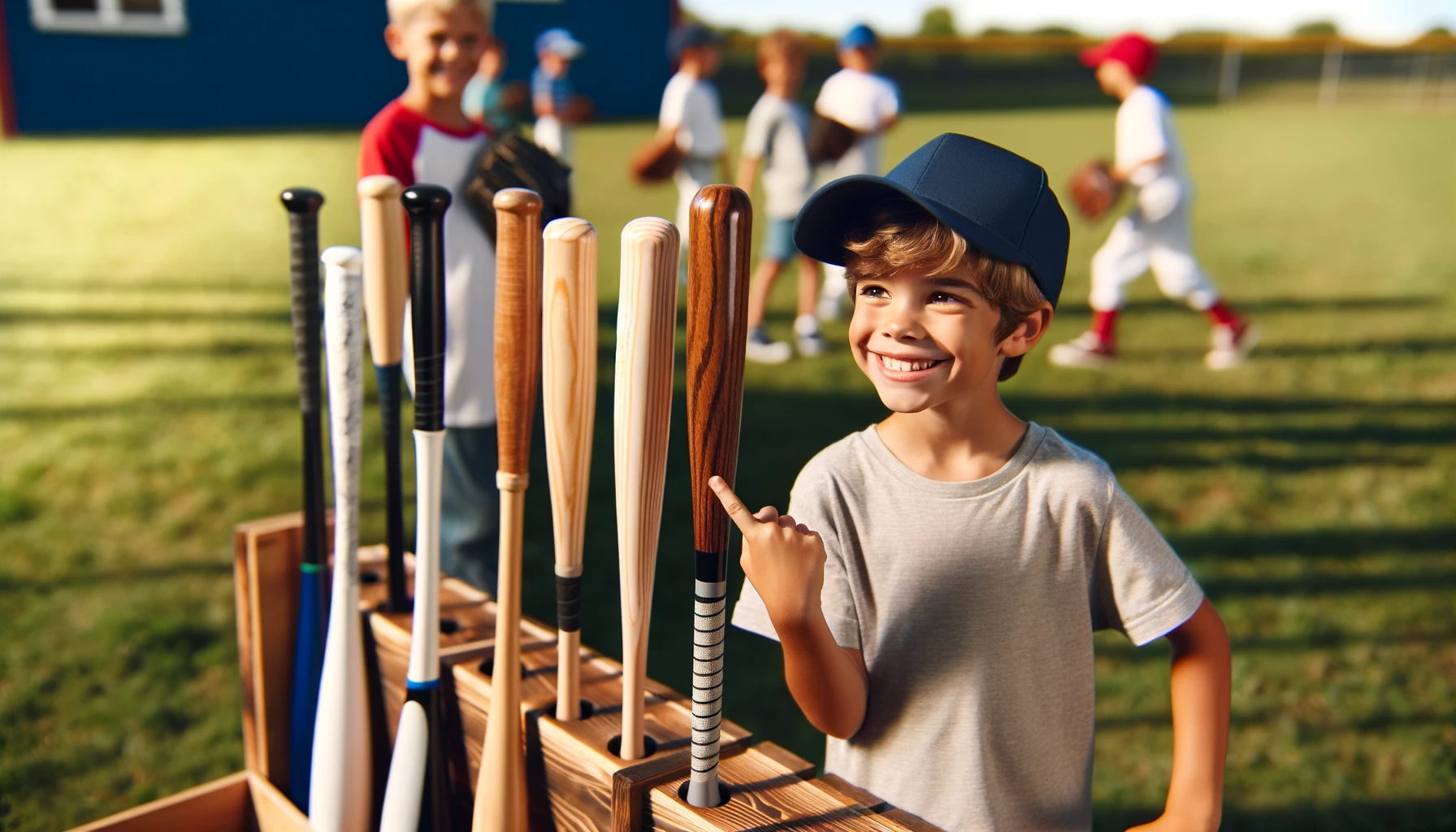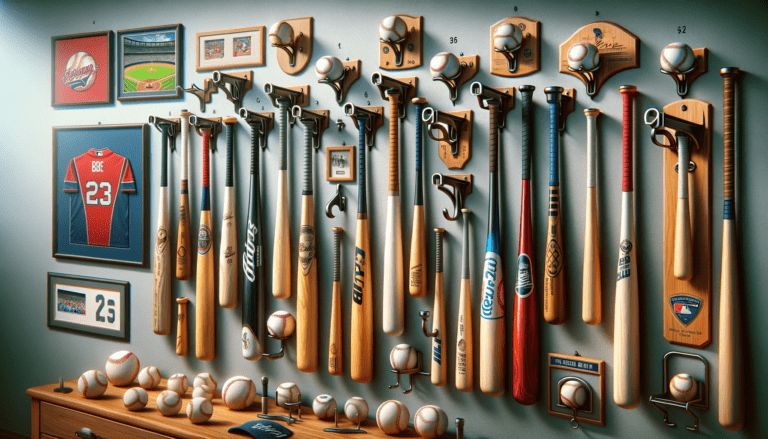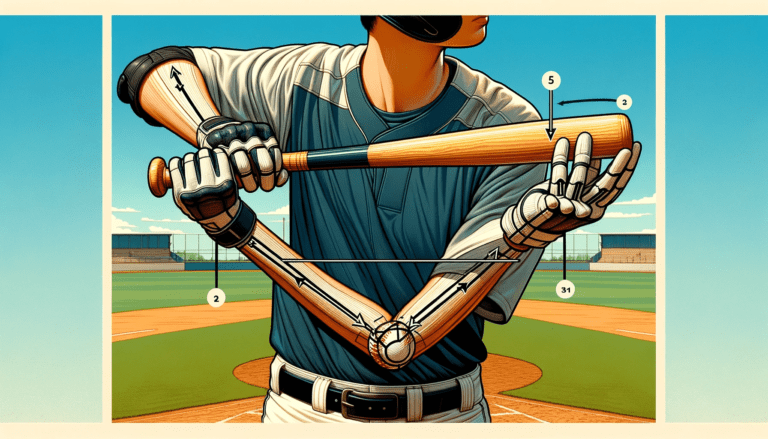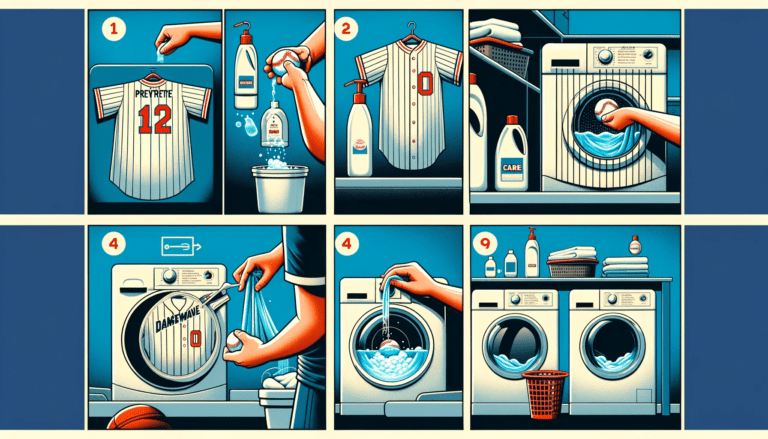What Size Baseball Bat for 8 Year Old Player?
Finding the right baseball bat size for an 8-year-old can be a bit of a headache. You want a bat that’s light enough for them to swing easily but also the right size bat length to help them hit the ball well.
For an 8-year-old, the ideal baseball bat size generally falls between 26 to 28 inches in length. This range provides a balance of control and power, suitable for their size and strength.
In this article, we will explore why this size works best and how it can help your young player feel more comfortable and confident at the plate, making their baseball experience much more enjoyable.
Key Takeaways
- The ideal bat size for 8-year-olds typically ranges from 26 to 30 inches in length, with weight corresponding to the bat’s length for balanced control.
- Differences between baseball and softball bats, such as weight and barrel diameter, are crucial when selecting the right equipment for the sport.
- It’s important to consider your child’s strength and skill level, as well as league regulations, which may dictate certain certification marks like the USA Softball Association (ASA).
- While budget is a factor, there are affordable options that do not compromise performance; however, investing more may be beneficial for serious or stronger hitters.
- Enhancing performance involves not only the right bat size but also additional training tools and customizations that can help improve batting skills and swing speed.
Understanding Baseball Bat Sizes for Young Players
The Importance of Bat Length and Weight
Selecting the right baseball bat for a young player is a delicate balance of length and weight. The perfect bat allows a player to swing confidently while maintaining control.
A bat that is too heavy can slow downswing speed, leading to missed opportunities at the plate. Conversely, a bat that is too light may not provide enough power behind the ball.
- Length is critical as it determines the player’s reach and ability to cover the strike zone. A bat that is too short gives the pitcher an advantage, while one that is too long can be cumbersome and affect bat speed.
- Weight should complement the player’s strength. A heavier bat can offer more power, but only if the player can handle the additional weight without compromising their swing mechanics.
Understanding the relationship between bat length and weight is essential for young athletes to perform at their best.
It’s not just about the power behind the swing, but also ensuring that swinging the bat feels like a natural extension of the player’s arms.
Differences Between Baseball and Softball Bats
When it comes to equipping young athletes, understanding the differences between baseball and softball bats is essential.
Baseball and softball bats may look similar, but they are designed with distinct characteristics to suit their respective sports.
- Baseball bats are typically heavier and have a larger barrel diameter, which caters to the need for power hitting in a game with larger field dimensions. They are often made of materials like aluminum, which can provide a significant ‘pop’ when hitting the ball.
- In contrast, softball bats are generally lighter and longer, allowing for greater swing speed and control. This design is particularly beneficial in softball, where techniques such as slap hitting are common and the playing field is more compact.
Choosing the right bat for your child involves more than just picking the correct sport; it’s about finding a bat that complements their strength, skill level, and the unique demands of the game they play.
How to Measure Your Child for the Perfect Bat
Measuring your child for the perfect baseball bat is a straightforward process that can be done at home with no special equipment.
Start by having your child stand upright with their arms to the side. Place the bottom knob of the bat in the center of your child’s chest, pointing it outward.
If your child can comfortably reach out and grab the barrel of the bat, it’s a good indication that the bat is the right length.
Another method is to stand the bat vertically against your child’s leg. The bat should reach up to their mid-hip; if it does, it’s likely a suitable length.
Remember, the right bat size can significantly impact your child’s comfort and performance at the plate.
When considering bat length, also keep in mind the weight and league regulations, which may influence the bat size you ultimately choose.
A bat that is too heavy can hinder swing speed, while one that is too light might not provide enough power.
Always check for certification marks that indicate the bat meets the required standards for your child’s league.
Read Also: How Many Meters is a Baseball Bat
Selecting the Ideal Bat for an 8-Year-Old
Recommended Bat Sizes for 8-Year-Olds
When selecting a bat for an 8-year-old, the right size bat part of the bat is crucial for their comfort and performance at the plate.
A general guideline is to choose wooden bats, ranging from 26 to 30 inches in length, with corresponding weights from 32 to 36 ounces.
Here’s a quick reference list:
- 26 Inch – 32 Ounce
- 27 Inch – 33 Ounce
- 28 Inch – 34 Ounce
- 29 Inch – 35 Ounce
- 30 Inch – 36 Ounce
It’s important to consider the drop weight of the bat, which is the difference between the length of the bat in inches and the weight in ounces.
A lighter bat, such as one with a -12 drop weight, can be ideal for younger players who are developing their swing.
Lastly, ensure that the bat adheres to league regulations. Look for certification marks like the USA Softball Association (ASA) to confirm the bat is approved for use in games. This step is essential to avoid purchasing a bat that your child cannot use in their league.
Considering Your Child’s Strength and Skill Level
When selecting a bat for an 8-year-old, it’s crucial to consider their age, individual strength and skill level.
A bat that is too heavy can hinder swing speed and control, while one that is too light may not allow for the development of proper hitting mechanics.
Here are some steps to ensure you choose a bat that complements your child’s abilities:
- Observe your child’s swing with different bat weights to gauge comfort and control.
- Consult with coaches or experienced players for personalized advice based on your child’s performance.
- Consider a bat size chart or calculator, like the one mentioned in our guide, to get a starting point for the right size.
Remember kids, the goal is to find a bat that your child can swing confidently and consistently. This will not only improve their performance but also enhance their enjoyment of the game.
League Regulations and Certification Marks
When selecting a bat for your 8-year-old, it’s crucial to consider the league regulations that govern bat use.
These rules can vary significantly between leagues and are designed to ensure fair play and safety for all participants.
For instance, some leagues may require specific certification marks on bats to indicate that they meet performance standards.
- Always check the league’s bat requirements before making a purchase.
- Look for certification marks such as USA Bat, USSSA, or BBCOR on the bat.
- Be aware of size restrictions; for example, bats used in Minor League Baseball must be less than 33 inches long and cannot have a barrel diameter exceeding 2 5/8 inches.
Understanding and adhering to these regulations is essential not only for compliance but also to avoid the disappointment of purchasing a bat that your child cannot use in games.
It’s advisable to consult with your child’s coach or league officials if you’re uncertain about the appropriate bat specifications.
Read Also: What is a Drop 3 Baseball Bat
Balancing Quality and Budget in Youth Bats

Affordable Options Without Sacrificing Performance
Finding a quality youth baseball bat doesn’t have to break the bank. There are excellent options available under $100 that provide a balance of performance and affordability.
For instance, bats priced at $99.95 offer a range of sizes suitable for 8-year-olds, such as 26-inch to 30-inch lengths with corresponding weights from 32 to 36 ounces.
When shopping for a budget-friendly bat, consider the following:
- Look for bats within the $0.00 – $76.00 to $126.00 price range, as they often deliver the best value for young players.
- Check for sales and discounts, especially during off-season or holiday sales, to snag a high-quality bat at a lower price.
- Read reviews and product descriptions carefully; for example, the DeMarini Zoa bat is praised for its ‘very level barrel and big sweet spot,’ indicating a good performance bat.
Remember, a higher price doesn’t always mean a better bat. With careful research and timing, you can equip your young player with a bat that supports their development without straining your finances.
When to Invest More in a Baseball Bat
Investing in a high-quality baseball bat can be a significant decision for parents and young athletes. As players progress through different levels of competition, the sophistication of their equipment should evolve too.
For those playing in multiple leagues or engaging in year-round training, a durable bat that withstands frequent use is essential.
Here are a few scenarios when investing more in a baseball bat is advisable:
- Your child is showing a serious commitment to the sport and is playing at a competitive level.
- The bat will be used extensively for both practice and games, necessitating a bat with a longer lifespan.
- You’re looking for specific material qualities, such as the pop of an aluminum bat or the feel of a composite bat, that can enhance your child’s interaction with the ball.
Remember, the right time to invest more is when the benefits of a higher-quality bat align with your child’s developmental needs and baseball aspirations.
Navigating Sales and Discounts for the Best Deals
Finding the best deals on baseball bats for your 8-year-old doesn’t have to be a daunting task.
Keep an eye out for coupon codes that can significantly reduce the cost of quality bats. Retailers often offer discounts to friends and affiliates, so don’t hesitate to ask around or join loyalty programs.
When shopping online, look for stores with a ‘Best Price Guarantee’ and read up on their promo exclusions to ensure you’re getting the lowest price possible.
It’s also wise to check the store’s return policy and whether they offer free shipping, as these can affect the overall value of your purchase.
Lastly, consider the timing of your purchase. Buying during off-season sales or taking advantage of rebates can lead to substantial savings.
Remember, the goal is to balance quality with affordability, so use these strategies to get the most out of your investment in your child’s baseball journey.
Read Also: How Long is a Baseball Bat
Enhancing Performance with the Right Equipment
The Role of Bat Weight in Swing Speed
The weight of a baseball bat is a pivotal factor in determining swing speed. A lighter, shorter bat, can lead to a quicker swing, which is essential for hitting the ball with greater velocity.
However, the choice of bat weight should align with the player’s strength and ability to maintain control during the swing.
- Balanced bats distribute weight evenly and are generally easier to swing, making them suitable for players focusing on speed.
- End-loaded bats carry more weight at the tip, potentially increasing power but requiring more skill to handle.
It’s important to note that the swing sequence, including the timing of peak speeds for different body segments, is influenced by the bat’s height and weight distribution.
Training with a bat that complements a player’s natural swing can enhance both speed and power, contributing to better performance at the plate.
Training Tools to Improve Batting Skills
To enhance batting skills, a variety of training tools can be employed, each designed to address specific aspects of a player’s technique.
Weighted baseballs and weighted hitting sticks are excellent for developing strength and power in a young hitter’s swing. These tools add resistance, which can lead to increased bat speed and power over time.
For improving hand-eye coordination and precision, training goggles and the SwingRail Hitting Aid can be particularly effective.
Training goggles limit a player’s field of vision, forcing them to focus more intently on the ball, while the bat head control and SwingRail guides the bat through the proper swing path, promoting muscle memory.
Lastly, the use of a high-quality batting tee, such as those offered by Tanner Tees, is fundamental for any player looking to refine their swing mechanics.
Batting tees allow for repetitive practice, enabling players to work on their stance, swing path, and pitch selection without the need for a pitcher.
Customizing Bats for Personal Preference
Customizing a child’s baseball bat itself to fit personal preferences can significantly enhance a young player’s comfort and performance at the plate.
Selecting the right material and construction is crucial, as it can affect the bat’s feel and responsiveness.
Here are some considerations for personalizing a bat:
- Material: Aluminum bats are popular for younger players due to their lighter weight and ‘pop’. As players grow, they might prefer composite or wood bats for different hitting styles.
- Grip and Feel: The handle’s grip can be adjusted with various tapes and sleeves to ensure a secure and comfortable hold.
- Aesthetics: Custom paint jobs and decals allow players to express their personality and stand out on the field.
Remember, while personal preference is important, it should always align with league regulations and the player’s ability to handle the bat effectively.
Conclusion
In summary, selecting the right baseball bat size for an 8-year-old is crucial for their comfort, performance, and enjoyment of the game. It’s important to consider the length and weight of the bat, ensuring it matches the player’s size and strength.
Budget is also a key factor, as children grow quickly and may need a new bat after a season or two. With a variety of options available, parents can find a quality bat that fits their budget without compromising on performance.
Remember to check league regulations for bat certifications to ensure compliance. Ultimately, the best bat is one that feels like a natural extension of the player’s height, allowing them to swing confidently and improve their skills on the field.
Frequently Asked Questions About Youth Baseball Bats
What are the recommended bat sizes for 8-year-olds?
For 8-year-olds, the recommended bat sizes typically range from 26 to 30 inches in length, with weights ranging from 16 to 20 ounces. It’s important to consider the child’s height and strength when selecting the bat size.
What is the difference between baseball and softball bats?
Baseball bats are usually heavier, with barrel diameters up to 2 5/8 inches, designed for power and slower swings. Softball bats are lighter, with a maximum barrel diameter of 2 1/4 inches, tailored for quicker swings and the fast-paced nature of softball.
How do I measure my child for the perfect bat?
To measure your child for the perfect bat, have them stand straight with arms to the side. Place the bat next to them, with the knob at the center of their chest. The ideal bat length should reach no further than the hip. Alternatively, have them extend their arm and measure from the center of their chest to the tips of their fingers.
What should I consider when balancing quality and budget in youth bats?
When balancing quality and budget, look for bats that offer good performance without breaking the bank. Consider that your child may outgrow the top bat models, so it’s wise to find options that fit your budget and still meet league regulations and performance needs.
What are the league regulations and certification marks I should look for?
Ensure the bat adheres to league specifications, such as those from the USA Softball Association (ASA). Look for certification marks like USA, USSSA, NSA, ISA, and WBSC to ensure the bat is approved for use in sanctioned games.
When should I invest more in a baseball bat for my child?
Consider investing more in a baseball bat if your child is showing a strong commitment to the sport and requires a bat that matches their skill level. Higher-quality bats can offer better performance and may be worth the investment for competitive play.







